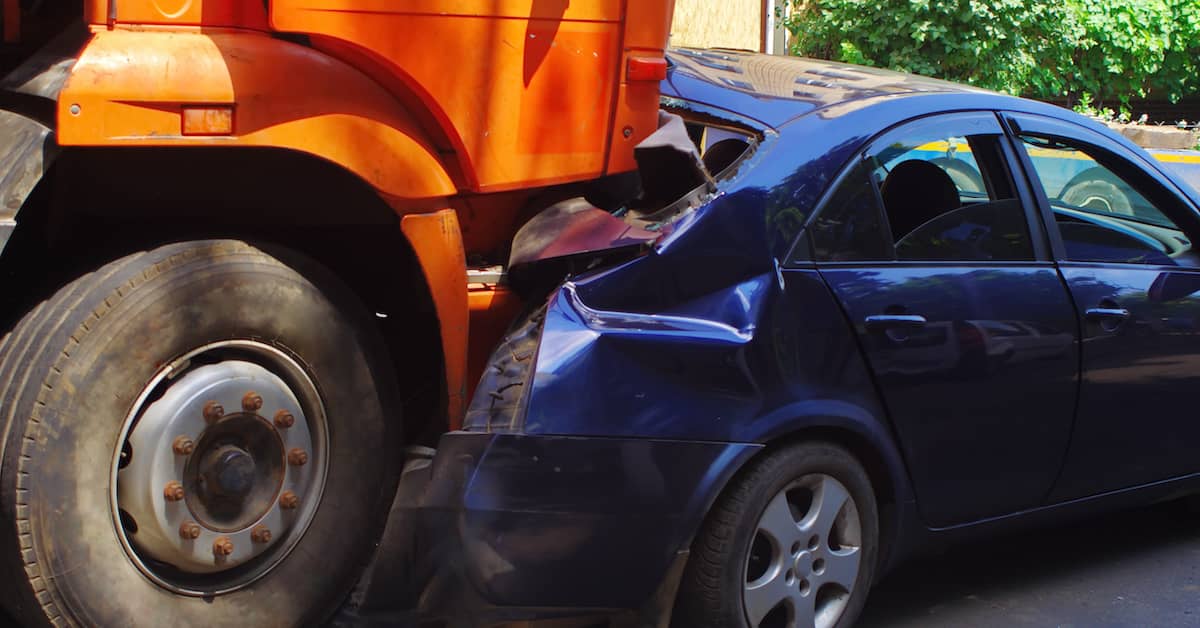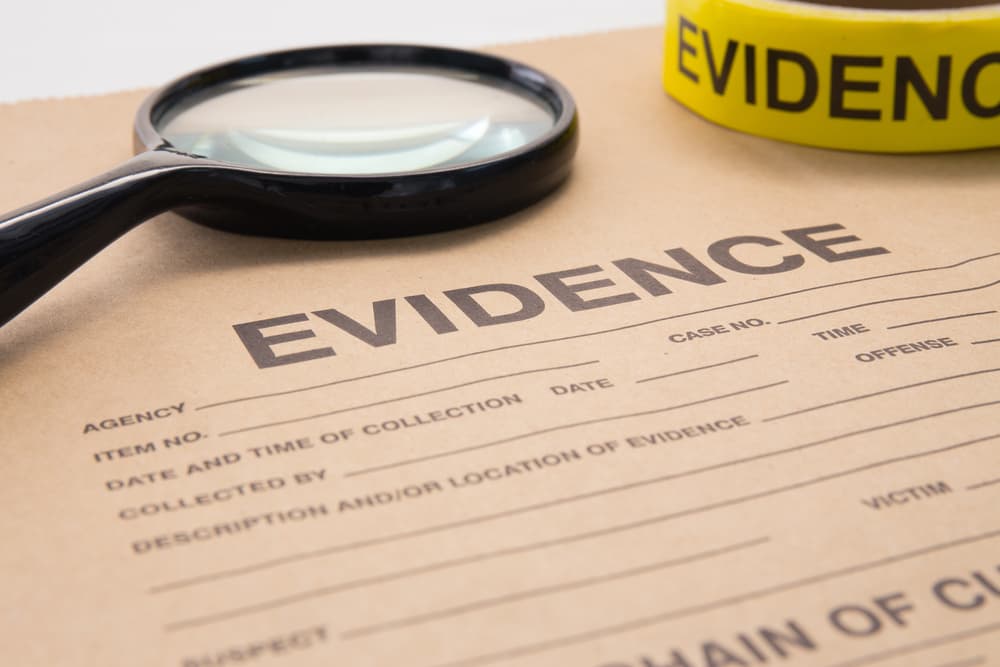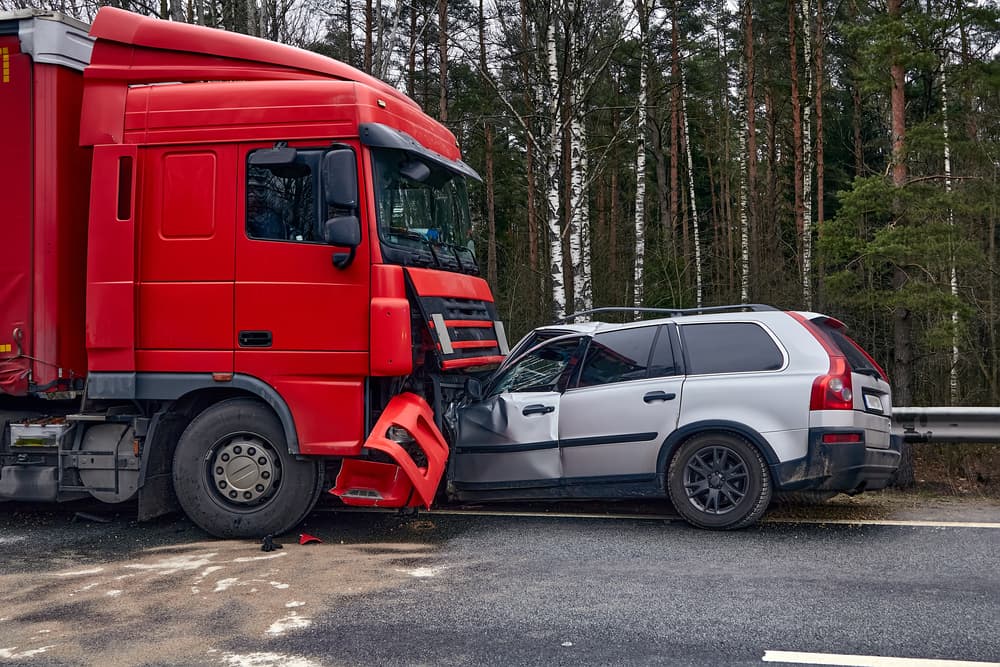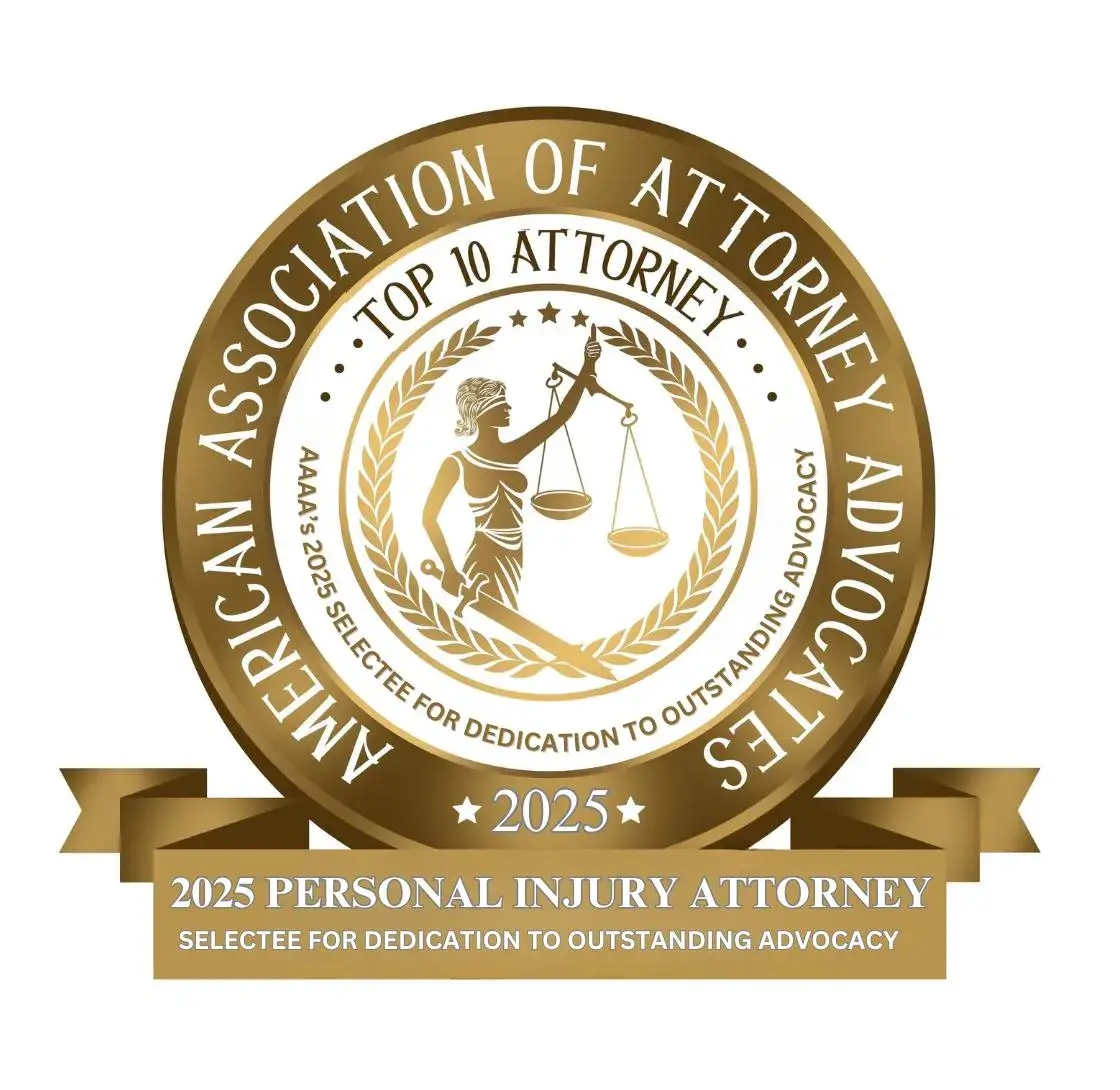
What to Do After a Truck Accident?
In New York City, especially areas like Manhattan and the Bronx, the heavy flow of truck traffic is a daily reality. Accidents involving commercial trucks can be terrifying for victims and their families. The physical and emotional ramifications seem never-ending; meanwhile, the bills keep piling up.
The days and weeks that follow a truck accident are critical, not just for your physical health, but for your ability to protect your future. Here’s a step-by-step rundown of what you what to do after a truck accident.
Step 1: Prioritize Your Immediate Safety and Health
In the chaotic moments immediately following a crash, it can feel impossible to think clearly. You are likely in shock, dealing with pain, and focused purely on survival. The following steps are what you would ideally do at the scene, but please hear this: if you were unable to do some or all of these things due to your injuries or the sheer stress of the situation, that is completely understandable.
- Check for Injuries: Do a quick check of yourself and any passengers in your vehicle. If anyone is seriously injured, do not move them unless they are in immediate danger, such as from a fire or oncoming traffic.
- Call 911 Immediately: This is the single most important action you can take. When you call 911, you are not just requesting an ambulance; you are also requesting police to come to the scene. A police report is an essential piece of official documentation that will be invaluable later. Tell the dispatcher your location and that you’ve been in an accident with a large truck. Be clear about any known injuries.
- Move to a Safe Location (If Possible): If you are able and your vehicle is movable, try to get it to the shoulder or off the main roadway to prevent further collisions. If you cannot move your vehicle, turn on your hazard lights. If you can get out of the car safely, move away from the flow of traffic to a secure spot. The side of a highway is a dangerous place.
- Accept Medical Attention: Adrenaline is a powerful chemical. It floods your system during a traumatic event and can easily mask the pain of serious injuries. You may feel “fine” at the scene, only to wake up the next day in excruciating pain. Paramedics are trained to spot signs of injury you might miss. Let them evaluate you. If they recommend you go to the hospital, go. There is nothing more important than your health.
Step 2: Document Everything You Can at the Scene

If you are physically able to do so without putting yourself in harm’s way, gathering information at the scene is incredibly powerful. Your memory of the event will be clearest in these first moments. Use your smartphone to become your own best investigator.
- Take Photographs and Videos: You cannot take too many. Capture the entire scene from multiple angles. Get wide shots showing the final resting positions of all vehicles, skid marks on the road, traffic signs, and the weather conditions. Then, get close-ups of the damage to your car, the truck, and any other vehicles involved.
- Photograph the Truck: Take pictures of the truck’s license plate, any Department of Transportation (DOT) numbers on the cab or trailer, and the name and logo of the trucking company.
- Exchange Information: Get the truck driver’s name, contact information, driver’s license number, and insurance information. Also, get the name of their employer (the trucking company). Be polite and calm, but do not engage in a lengthy discussion or argument about who was at fault.
- Identify Witnesses: Look around for anyone who may have seen the accident. Ask for their name and phone number. Independent witnesses can provide an unbiased account of what happened, which can be crucial.
- Speak to the Police: When the police arrive, give them a clear, factual account of what you remember. Avoid guessing, speculating, or admitting any fault. Just state the facts as you know them. Before the officer leaves, make sure you get their name, badge number, and the police report number.
It’s OK if you weren’t able to take these initial steps after your accident. What matters most is what you do from this moment forward. Your journey to recovery starts now, and the absolute first priority is your health and immediate safety.
Step 3: Seek a Comprehensive Medical Evaluation
We mentioned this in the first step, but it is so important that it deserves its own section. Even if you were not taken to the hospital by an ambulance, you must see a doctor as soon as possible after the accident.
Many serious injuries common in truck accidents do not present symptoms immediately. These can include:
- Whiplash and Soft Tissue Injuries: The sheer force of a truck’s impact can cause severe damage to the muscles and ligaments in your neck and back.
- Concussions and Traumatic Brain Injuries (TBIs): You do not have to hit your head to suffer a concussion. The violent jarring motion of the crash is often enough. Symptoms like headaches, dizziness, confusion, or memory problems can appear hours or even days later.
- Internal Bleeding or Organ Damage: These are life-threatening injuries that may have no immediate external signs.
Going to a doctor creates a medical record that officially links your injuries to the accident. This is not just about a potential legal case; it is about protecting your long-term health. Follow your doctor’s orders precisely. Attend all follow-up appointments, go to your physical therapy sessions, and take prescribed medications. Your commitment to your recovery is paramount.
Step 4: Report the Accident, But Be Wary of Early Conversations
You will need to report the accident to your own insurance company. However, you will likely receive a call from the trucking company’s insurance adjuster very quickly, sometimes even while you are still at the scene. It is critical to understand their role.
The insurance adjuster is not your friend. They are not calling to see how you are doing. They are a highly trained professional whose job is to protect their company’s financial interests by minimizing or denying your claim.
When speaking with another party’s insurance adjuster:
- Provide Only Basic Facts: You can confirm your name, the time, and location of the accident.
- Do NOT Give a Recorded Statement: You are not legally obligated to do so. They can use your words, spoken while you are still in shock and pain, against you later. Politely decline.
- Do NOT Speculate on Fault: Do not say “I’m sorry” or “I think I could have…” These statements can be interpreted as an admission of guilt.
- Do NOT Minimize Your Injuries: Avoid saying “I’m okay” or “I’m fine.” The full extent of your injuries is not yet known. A simple, “I am seeking medical treatment for my injuries,” is enough.
- Do NOT Sign Anything: Do not sign any medical authorizations or settlement offers without having them reviewed. An early settlement offer is almost always a sign that they know your claim is worth much more, and they are trying to resolve it for pennies on the dollar before you realize its true value.
Step 5: Understand Why Truck Accidents Are So Complex

An accident with an 80,000-pound semi-truck is not the same as a fender bender with another passenger car. The forces are greater, the injuries are more severe, and the legal landscape is far more complex. The playing field is not level.
Trucking companies are large corporations defended by teams of experienced lawyers. They are governed by a dense set of federal and state regulations known as the Federal Motor Carrier Safety Regulations (FMCSR), which dictate everything from how many hours a driver can be on the road to how often a truck must be inspected and maintained.
Furthermore, there are often multiple parties who could be at fault, including:
- The Truck Driver: Who may have been speeding, distracted, fatigued, or under the influence.
- The Trucking Company: Who may have pressured the driver to violate hours-of-service rules, failed to conduct proper background checks, or neglected vehicle maintenance.
- The Truck Manufacturer: If a defective part, like brakes or a tire, failed.
- The Cargo Shipper/Loader: If the truck’s cargo was improperly loaded or secured, causing it to shift and leading to a loss of control.
Investigating a truck accident requires focused knowledge to secure evidence like the truck’s “black box” data recorder, driver logs, maintenance records, and personnel files before the trucking company can legally destroy them.
Step 6: Focus on Your Recovery and Lean on Your Community
The road to recovery is often long. It is a journey that affects every part of your life. The physical pain is only the beginning. You may be unable to work, creating immense financial strain and anxiety about how you will pay your mortgage, cover your medical bills, and provide for your family.
You may be dealing with the emotional trauma of the event, replaying the crash in your mind and struggling with fear or anxiety every time you get behind the wheel. The life you knew has been disrupted, and it can feel incredibly isolating.
During this time, it is more important than ever to lean on your support system. Your family, your friends, your faith, and your neighbors—these are the pillars that will hold you up. Whether you are part of the tight-knit fabric of Fort Lee, the vibrant melting pot of Hackensack and Teaneck, or the resilient neighborhoods of the Bronx, your community is a source of strength.
The ability to provide for your loved ones, to run your small business, to participate in community and religious life—these are fundamental parts of who you are. When an injury takes that away, the loss is profound. Remember that asking for help, whether from family or from professionals, is not a sign of weakness. It is a courageous act of self-preservation and a testament to your will to heal and rebuild.
Step 7: Preserve Evidence and Keep a Journal
As you move forward, keep everything related to the accident in a dedicated folder or box. This includes medical bills, receipts for prescriptions, repair estimates for your car, and any correspondence from insurance companies.
It is also incredibly helpful to keep a simple daily journal. In it, document:
- Your Physical Pain: Note your pain levels on a scale of 1-10, where the pain is located, and how it limits your daily activities.
- Your Emotional State: Write down your feelings of anxiety, frustration, or sadness.
- The Impact on Your Life: How has the injury affected your ability to sleep, work, care for your children, engage in hobbies, or attend family and community events?
This journal will become a powerful record of how this accident has truly impacted your life, beyond just the medical bills. It tells the human story of your struggle and your journey.
When You Need a Guide: Maggiano, DiGirolamo & Lizzi Can Help
You have been through a harrowing ordeal, and the path ahead can seem daunting. Dealing with insurance claims and trucking regulations while trying to heal is a burden no one should have to bear alone. This is the point where seeking experienced legal guidance can be the most important step you take to protect yourself and your family.
At Maggiano, DiGirolamo & Lizzi, we understand the shock, the fear, and the overwhelming weight you are feeling. We have dedicated our professional lives to standing with accident victims and ensuring their voices are heard.

You are not just another case file to us. You are a unique person, and your story deserves to be told with compassion and conviction. When you work with our firm, you are not getting a single lawyer; you are getting a dedicated team of 30 people, all committed to your cause.
We are in this together. We work on a contingency fee basis, which means we do not get paid attorney’s fees unless we win your case. Our goal is to level the playing field, to stand up to the powerful insurance and trucking companies, and to secure the fair and just compensation you need to cover your medical bills, lost income, and pain and suffering.
Contact Maggiano, DiGirolamo & Lizzi at (201) 585-9111 or through our online form for a free, no-obligation consultation to learn about your rights. Let our family help yours.



















